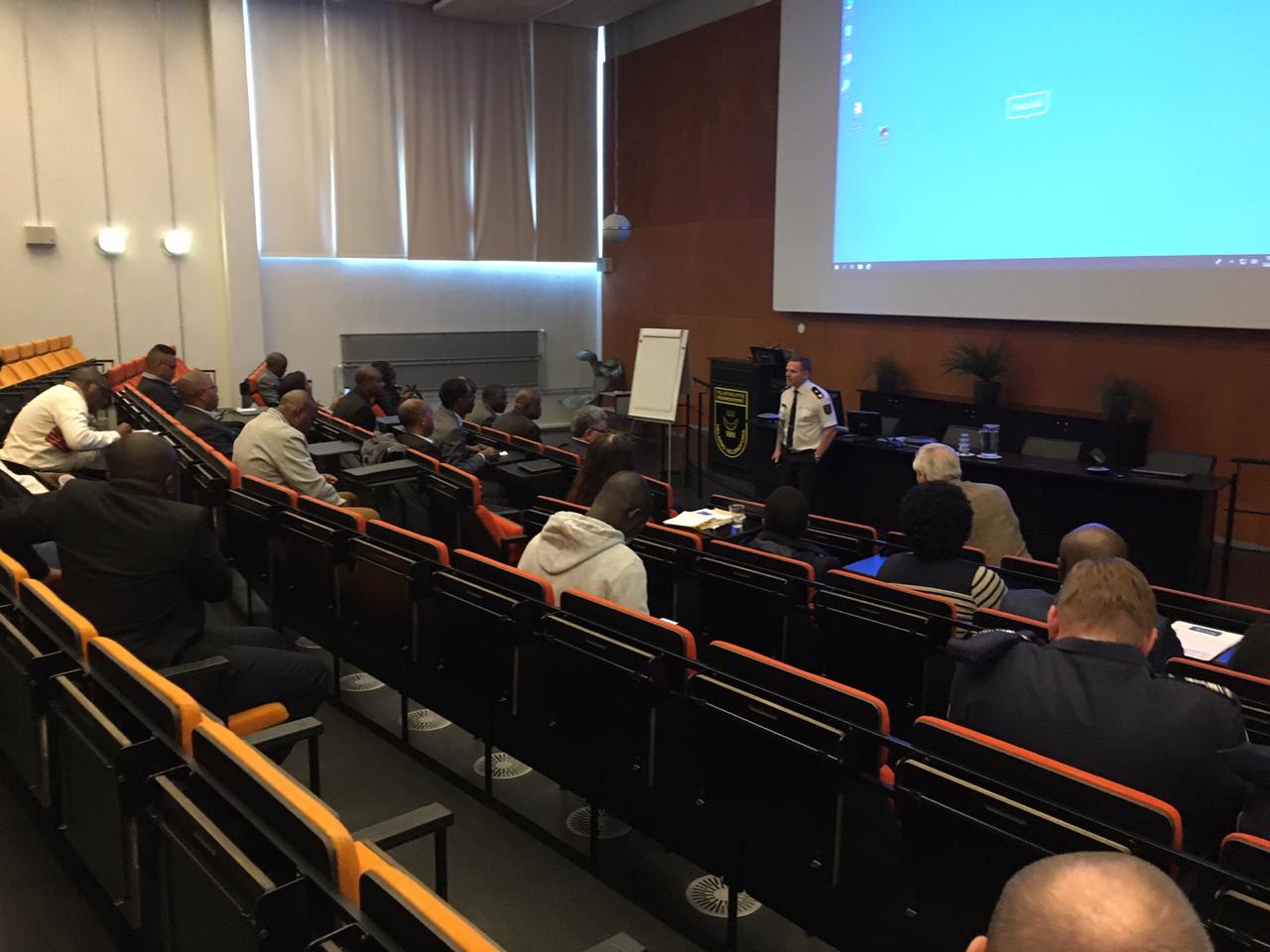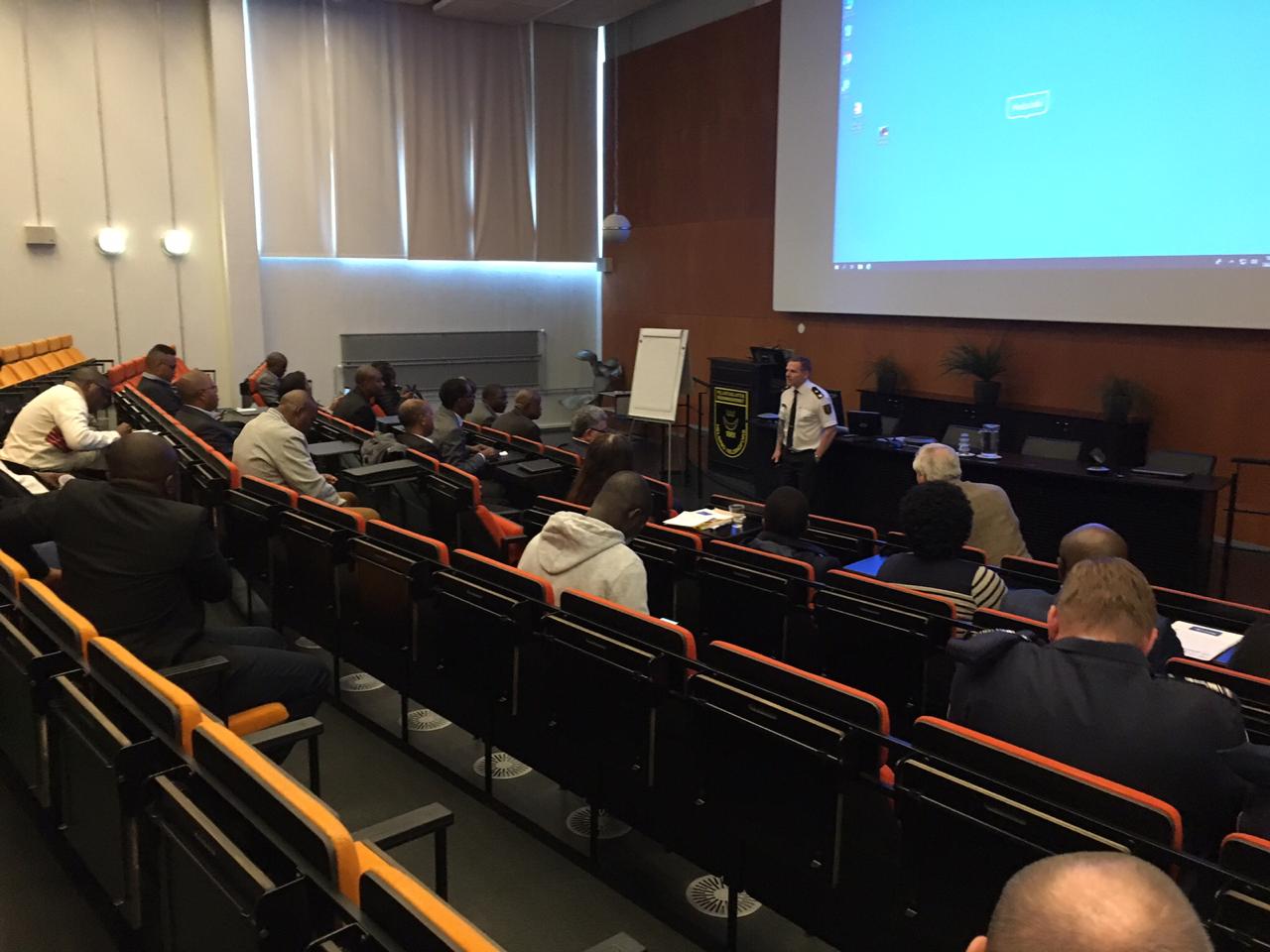The SADC Nuclear Regulators on a Visit to Finnish Nuclear Safety and Security Institutions as Part of the ISTC-Implemented EU Project MC 5.01 15B

.jpg)
Members of the SADC Nuclear Regulators Network and Project MC 5.01 15B Steering Committee are on a study visit to Finland in the first week of June 2019. It is organized by ISTC in cooperation with Environics Ltd., the CBRN Suomi Association, and Societal Security Solutions Ltd., Finland. Following fruitful discussions at STUK, Finland’s Radiation and Nuclear Safety Authority, the participants had a meeting at the Helsinki City Rescue Department. Andreas Schneider, head of Emergency Preparedness, welcomed the visitors, alongside with the City Police Chief Brigadier Vuori, the representative of the Finnish Meteorological Institute (FMI) Minna Rantamaki, and Matti Juha, from the VERIFIN Unit of the Helsinki University that is the OPCW national authority of the country. These are just a few of the numerous government agencies and institutions that collaborate to plan and ensure effective emergency response preparedness.
Comprehensive security is an obligation of all’, declared the Police commander describing the division of responsibilities among involved actors that in Finland is based on law. Ms. Rantamaki, FMI, described the interaction with STUK to define the potential dispersion of radioactive radiation. On such occasions the Institute uses the SILAM dispersion model, whereby STUK operates with RODOS, the Real Time On-Line Decision-Making Support System. In the words of Mr. Juha, Finland is not only observant and compliant member of the Chemical Weapons Convention, but actively engaged in international projects designed to increase the verification capacity of other countries, particularly from Africa. For seven years, it has organized annual training courses for Kenya.
 On 4 June the participants in the visit travelled to Finland’s biggest port Hamina-Kotka, one of the major cargo harbours on the Baltic Sea. The port serves approximately 3000 ships a year. It is a hub of more than 170 logistics companies with over 2000 employees. Timo Kallio, the Chief of Security, explained to the visitors the functioning of the portal monitors at the port’s main gate, whereby an alarm signal for high levels of radiation would trigger closure of the port and dispatchment of a movable unit of six experts that is on duty 24/7, for precise verification. The port has hosted also exercises of both military and civilian CBRN special squads. From March 2019 Hamina-Kotka applies the latest EU port cervices regulation 2017/352 that – inter alia - obliges service providers to pay due attention to safety and security.
On 4 June the participants in the visit travelled to Finland’s biggest port Hamina-Kotka, one of the major cargo harbours on the Baltic Sea. The port serves approximately 3000 ships a year. It is a hub of more than 170 logistics companies with over 2000 employees. Timo Kallio, the Chief of Security, explained to the visitors the functioning of the portal monitors at the port’s main gate, whereby an alarm signal for high levels of radiation would trigger closure of the port and dispatchment of a movable unit of six experts that is on duty 24/7, for precise verification. The port has hosted also exercises of both military and civilian CBRN special squads. From March 2019 Hamina-Kotka applies the latest EU port cervices regulation 2017/352 that – inter alia - obliges service providers to pay due attention to safety and security.
The Study tour will continue with a visit to Eurajoki site: TVO Nuclear Power Plant and Nuclear Waste Facilities, and other activities.

